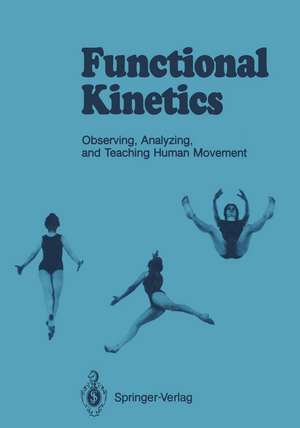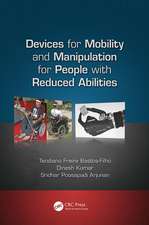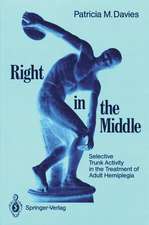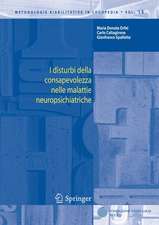Functional Kinetics: Observing, Analyzing, and Teaching Human Movement
Autor Susanne Klein-Vogelbach Traducere de Gertrud Whitehouseen Limba Engleză Paperback – 27 noi 1989
The well-known physiotherapist presents her theory concerning the systematic observation and analysis of human movement. The purpose of functional kinetics is to improve observation, analysis and instruction of human movement. The physiotherapist must be able to analyse movement in order to find and define the functional problem. She or he must be able to effect the required change in movement, whether through manipulation, instructing the patient how to move or both.
The ideas outlined in this book are basic to physical therapy and rehabilitation and should be familiar to every active therapist.
Preț: 374.78 lei
Preț vechi: 394.51 lei
-5% Nou
Puncte Express: 562
Preț estimativ în valută:
71.72€ • 74.60$ • 59.21£
71.72€ • 74.60$ • 59.21£
Carte tipărită la comandă
Livrare economică 12-26 aprilie
Preluare comenzi: 021 569.72.76
Specificații
ISBN-13: 9783540153504
ISBN-10: 3540153500
Pagini: 356
Ilustrații: XIV, 337 p.
Dimensiuni: 170 x 242 x 19 mm
Greutate: 0.57 kg
Ediția:Softcover reprint of the original 1st ed. 1990
Editura: Springer Berlin, Heidelberg
Colecția Springer
Locul publicării:Berlin, Heidelberg, Germany
ISBN-10: 3540153500
Pagini: 356
Ilustrații: XIV, 337 p.
Dimensiuni: 170 x 242 x 19 mm
Greutate: 0.57 kg
Ediția:Softcover reprint of the original 1st ed. 1990
Editura: Springer Berlin, Heidelberg
Colecția Springer
Locul publicării:Berlin, Heidelberg, Germany
Public țintă
Professional/practitionerCuprins
General Introduction.- 1 Orientation of the Individual.- 1.1 Orientation Within the Body.- 1.2 Orientation in Space.- 1.3 Orientation Outwards from the Body.- 1.4 Orientation of the Individual and ‘Patient Language’.- 1.5 Summary.- 2 Orientation of the Physiotherapist.- 2.1 Homunculus: The Man in a Cube.- 2.2 Planes — Lines — Points.- 2.3 Proximal — Distal.- 2.4 Joints as Pivots, Switch Points and Levels of Movement.- 2.5 Capsules and Ligaments of Joints as End-Stops of Movement.- 2.6 Muscles as Effectors of Posture and Movement.- 3 Fundamental Observation Criteria.- 3.1 Functional Body Segments.- 3.2 Activity States.- 3.3 Analysis of Movement by Differentiating Between Equilibrium Reactions.- 3.4 Observer’s Planes.- 4 Instruction.- 4.1 Functional Analysis in Therapist Language.- 4.2 Formula for Instructions in Patient Language.- 4.3 Adapting an Exercise to the Patient’s Constitution and Condition.- 5 Functional Measuring.- 5.1 Points, Lines and Axes of BS Thorax.- 5.2 Points, Lines and Axes of BS Head.- 5.3 Points, Lines and Axes of BS Pelvis and BS Legs.- 5.4 Points, Lines and Axes of BS Arms.- 6 Functional Status.- 6.1 Condition.- 6.2 Constitution.- 6.3 Mobility.- 6.4 Postural Statics.- 6.5 Basic Gait Test.- 6.6 Motor Behaviour in Bending Down.- 6.7 Respiration.- 6.8 Formulating the Functional Problem.- 6.9 Guidelines to Planning Therapy.- 6.10 Examples.- 7 Treatment Techniques.- 7.1 Mobilizing Massage.- 7.2 Buttressing Mobilization.- 7.3 Lift-Free/Reduced-Lift Mobilization of the Vertebral Column.- 8 The Concept of Movement Training.- 9 Glossary.- 10 Bibliography.- 11 Subject Index.










